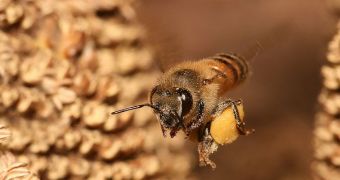In a new scientific research, an investigator in the United States is the latest voice to join a chorus of experts citing a class of newly-introduced pesticides as one of the main factors promoting the collapse of honeybee populations in the country.
These controversial chemicals, known as neonicotinoids, are one of the most important chemicals that explain the disappearance of the bees says bee specialist and federal entomologist Jeffrey Pettis.
The expert, who holds an appointment with the United States Department of Agriculture (USDA), believes that the pesticide acts not by harming the bees itself, but by making them more susceptible to getting infected from other sources.
This is roughly the same type of approach that the human immunodeficiency virus (HIV) takes. After infection, the microorganism shuts down the host's defense system, exposing him or her to infections produced by other bacteria, microbes and pathogens.
According to the The Independent, Pettis made the announcement in a documentary that was released in Europe, but not in the United States. In the film, the USDA expert details two experiments he conducted using common honeybees.
He separated the insects in two groups, and then exposed one of them to imidacloprid, which is a common neonicotinoid. The other wasn't exposed to any chemicals. Both groups were then infected with Nosema, a common bee disease.
Pettis says that the group which was exposed to the pesticide proved to be significantly more prone to infection than the other one. Imidacloprid has the same effects as a chemical known clothianidin, which is also a neonicotinoid.
Both chemicals are produced by German agrochemical giant Bayer. But clothianidin, along with all the chemicals in its class, were partially banned throughout the European Union. However, in 2003, the US Environmental Protection Agency (EPA) agreed to approve their use in the country.
For the past 8 years, clothianidin has gained widespread popularity, being used on a large variety of crops, including corn. This pollen-rich plant is a favorite of honeybees, so the connection between bee disease and the chemical is there for whomever has eyes to see, Pettis says.
Experts believe that, overall, bee populations are succumbing to a combination of factors, such as disease, stress, pollution, weaker immune systems, and exposure to dangerous chemicals, Wired reports.

 14 DAY TRIAL //
14 DAY TRIAL //